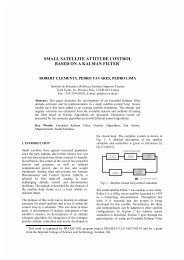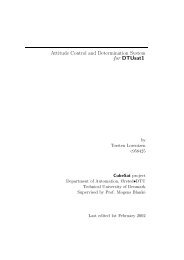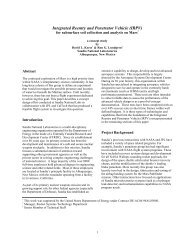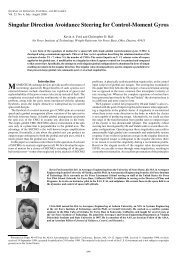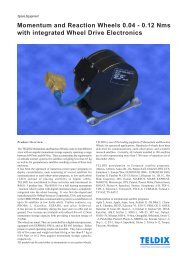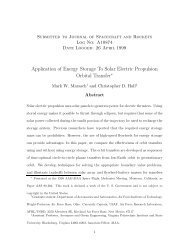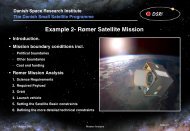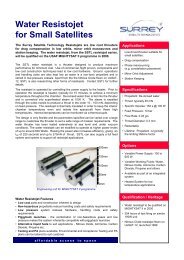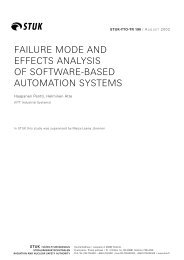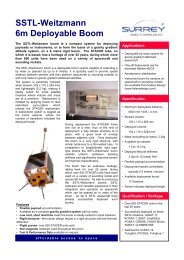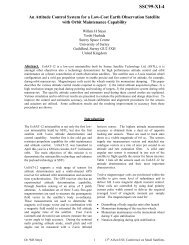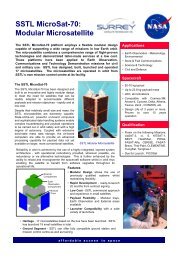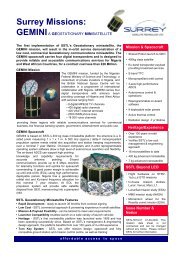Sea Launch User's Guide
Sea Launch User's Guide
Sea Launch User's Guide
Create successful ePaper yourself
Turn your PDF publications into a flip-book with our unique Google optimized e-Paper software.
7.2 Electrical Interfaces<br />
Overview<br />
Characteristics of the electrical interfaces are covered in the following<br />
sections, including<br />
• Hard-line link (umbilical).<br />
• Radio frequency link.<br />
• External communication.<br />
• In-flight interfaces.<br />
• Electrical power.<br />
Spacecraft/adapter<br />
in-flight electrical<br />
disconnects<br />
The launch vehicle adapter standard configuration accommodates two<br />
MIL-C-26482 series connectors (61 pins) or two MIL-C-81703 series<br />
connectors (37 pins). The spacecraft contractor should procure both<br />
halves and provide the mating half to the launch vehicle for installation<br />
on the adapter. Additional required connectors can be accommodated and<br />
will be negotiated on a case-by-case basis.<br />
Hard-line link<br />
(umbilical)<br />
Spacecraft hard-line link electrical interconnections between the<br />
spacecraft/adapter in-flight disconnects and the spacecraft electrical<br />
ground support equipment are provided by two functionally similar but<br />
physically separate umbilical cable paths:<br />
• Interface skirt.<br />
• T-0.<br />
Both umbilical paths are available during integration check out and<br />
during transit to the launch site.<br />
• At approximately L-8 hr the interface skirt umbilical is<br />
disconnected.<br />
• The T-0 umbilical remains connected until liftoff.<br />
Table 7-1 and figure 7-6 depict umbilical configuration during spacecraft<br />
encapsulation, integrated launch vehicle integration, transit phase, and<br />
on-pad operations.<br />
REV B D688-10009-1 7-7



